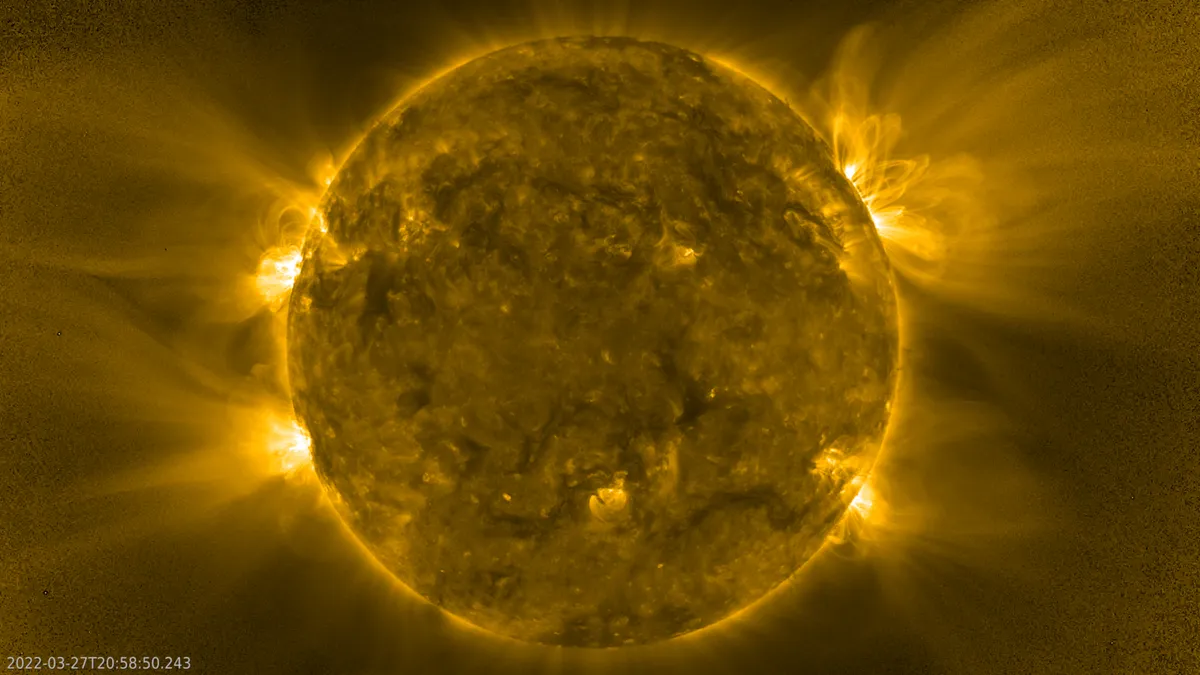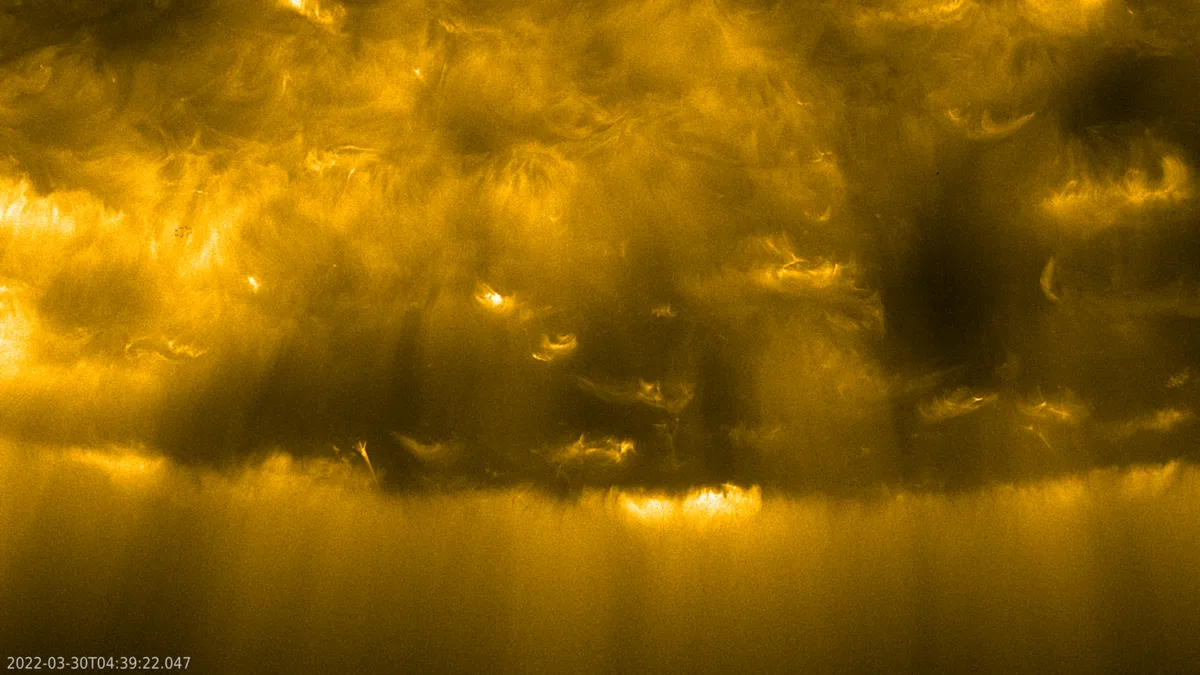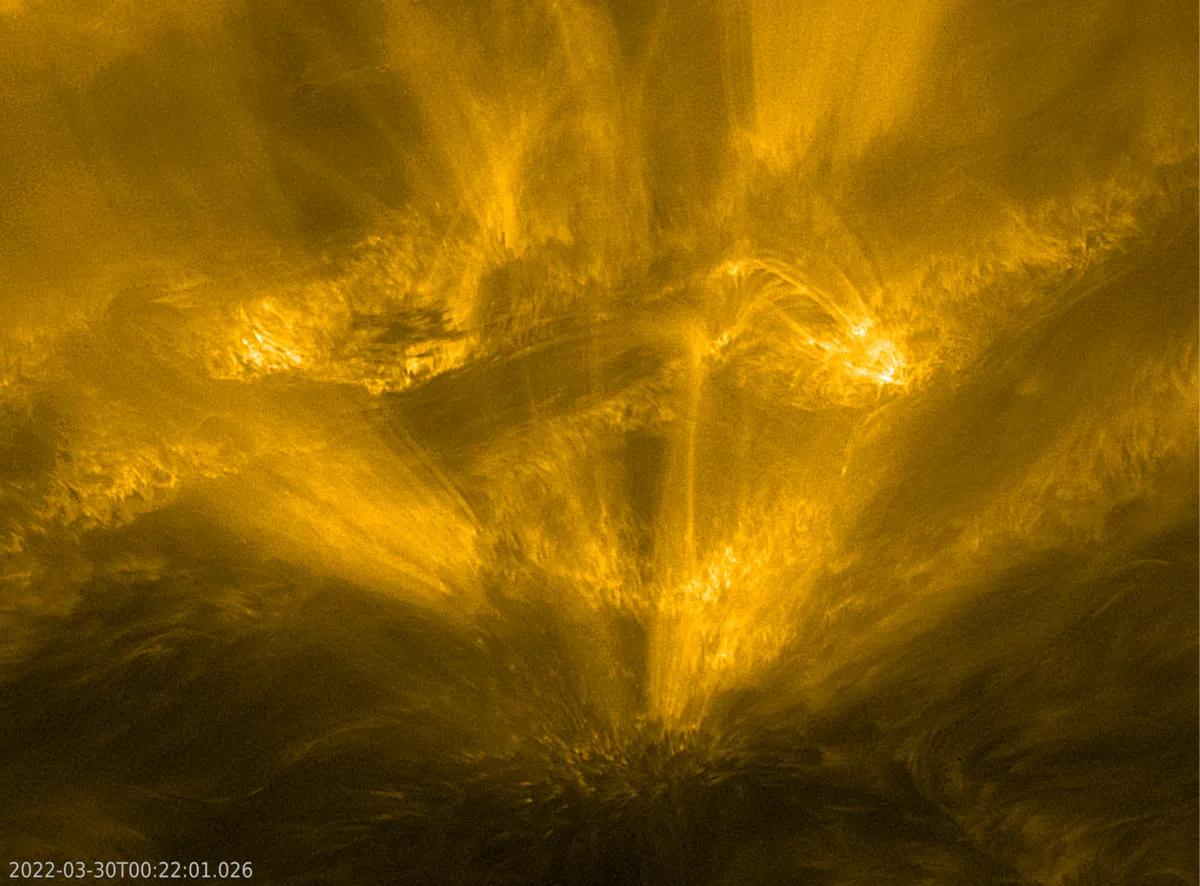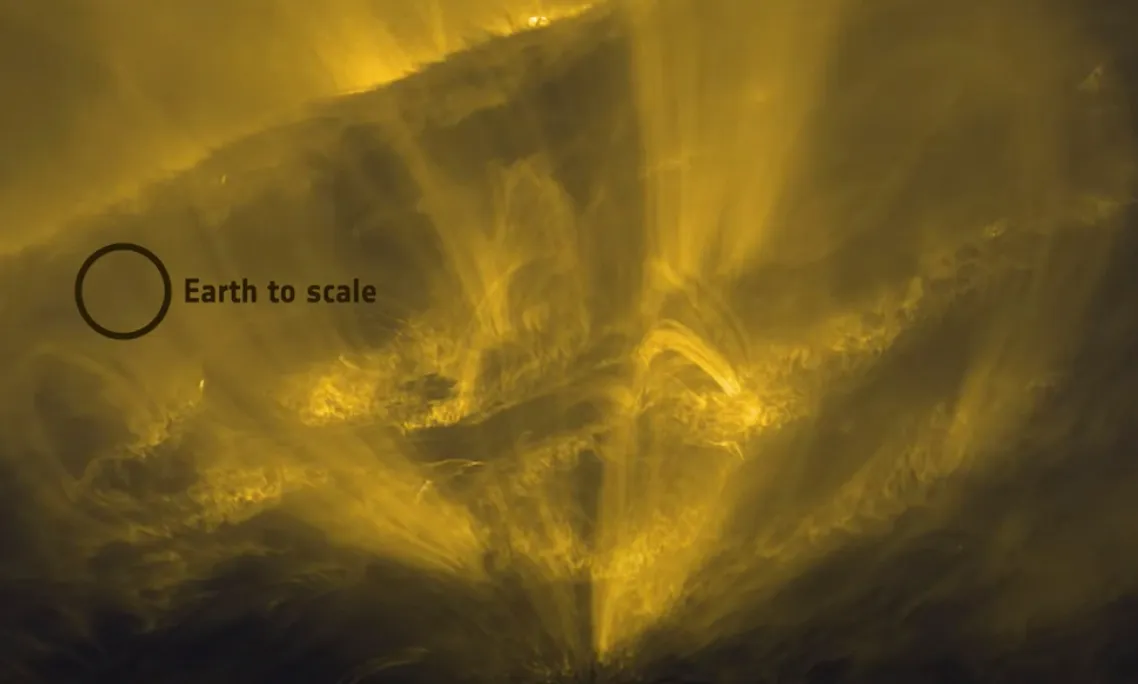Brand new images captured by the ESA/NASA Solar Orbiter spacecraft show the dynamic surface of the Sun in incredible detail.
These amazing photos of our Sun are already revealing key insights into the workings of the star at the centre of the Solar System, but solar scientists have only just begun analysing the data
Launched in February 2020, Solar Orbiter's first images were released by the European Space Agency in July 2020.
For more solar science, read our guide to the Sun and get answers to some of the biggest questions about the Sun.

This latest batch of solar imagery was captured during the spacecraft's 'perihelion' - its closest approach to the Sun in its orbit - on 26 March 2022.
They reveal solar flares, views of the Sun's solar poles and a so-called solar 'hedgehog'.
Our Sun is currently experiencing increased activity in the form of flares, sunspots and other surface phenomena as it approaches the peak of the Solar Cycle.
Our Sun is currently in Solar Cycle 25.
"Although the analysis of the new dataset has only just started, it is already clear that the ESA-led mission is providing the most extraordinary insights into the Sun’s magnetic behaviour and the way this shapes space weather," a statement from ESA said.
During the close approach, the spacecraft flew closer to the Sun than Mercury, the innermost planet, causing its heat shield to reach temperatures of about 500°C.
The Sun's South Pole

One of the most incredible of the new images captured by Solar Orbiter shows the Sun's South Pole on 30 March 2022, 4 days after perihelion.
The images were taken using the spacecraft's Extreme Ultraviolet Imager (EUI).
Scientists are keen to learn more about what the images and data can reveal about the solar poles.
The Sun's magnetic fields are swept up to the poles and then sucked back down into the Sun where, scientists say, they may "form the magnetic seeds for future solar activity."
The lighter regions in the image are mainly magnetic loops erupting from the interior of the Sun.
Darker areas are points where the magnetic field is open. Here, gases escape into space as a stream of charged particles known as the solar wind, which is responsible for generating the aurora displays we see on Earth.
Space hedgehog

Dubbed the 'space hedgehog', an intriguing feature has been spotted just below the centre of the solar disc.
This waving, looping structure is seen in an image captured on 30 March 2022, again by Solar Orbiter's EUI.
It seems solar scientists are still unsure exactly what the space hedgehog is or how it formed, but it's known to measure 25,000km across, making it about twice as wide as Earth.
The gases seen in the space hedgehog image reach temperatures of about 1,000,000°C.

What next for Solar Orbiter?
In 2025, Solar Orbiter is set to use the gravitational pull of Venus as a means to increase the inclination of its orbit, allowing it to approach the solar poles from a top-down perspective.
Learning more about space weather and the solar wind will enable solar scientists to decipher the Sun's effect on our planet and the rest of the Solar System.
It can also help inform how best to protect astronauts and space probes from the threat of solar outbursts.
"We are so thrilled with the quality of the data from our first perihelion," says Daniel Müller, ESA Project Scientist for Solar Orbiter.
"It’s almost hard to believe that this is just the start of the mission. We are going to be very busy indeed."
